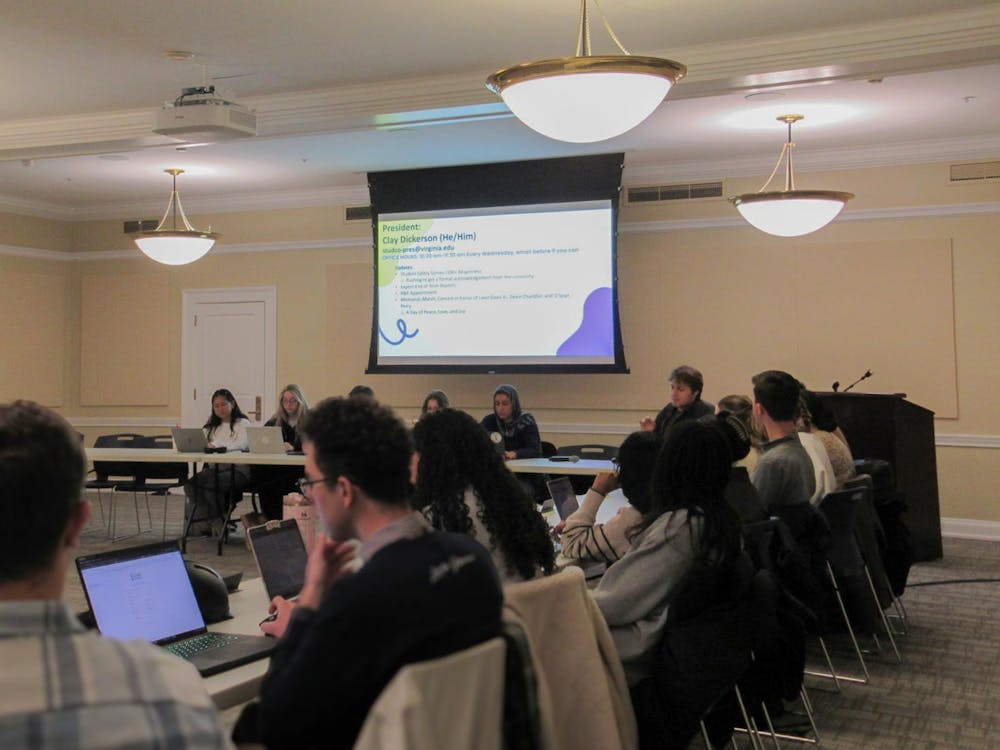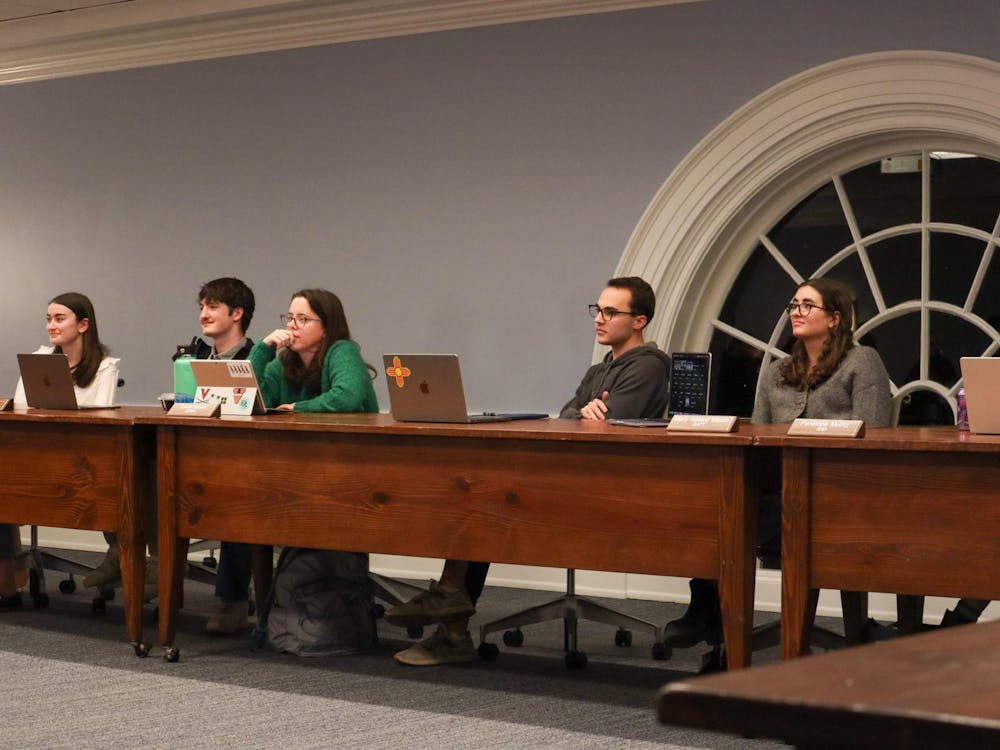With new properties and construction on Jefferson Park Avenue and throughout the Corner district, the market for new student housing is booming around the University. Charlottesville and University officials have been looking for years to improve housing opportunities for a burgeoning student population.
"The University is excited to see the new opportunities and new properties being developed," Wade Apartments General Manager Wade Tremblay said. "There will be replacement of worn properties. There is rebirth and rejuvenation that is going on now, and it's going to be going on in an even bigger way in the upcoming years."
Tremblay's complex, Wertland Square, which is in the process of being constructed, will face both Wertland and 14th Streets.
"For the site on which we are building, we did a transaction with the University," Tremblay said. "They needed some of our property on Brandon [Ave.] for the South Lawn project."
Other new apartment communities recently constructed include Real Property Inc.'s Venable Court apartments, bordering 14th and John Streets, and the individually developed Carrollton Terrace apartments on JPA.
Currently under construction, Veliky L.C.'s "The V" building on 15th street, replaced a number of formerly decrepit single-family homes bordering railroad tracks and is scheduled for completion in August 2006.
None of the projects, whether recently completed, currently under construction or only in the planning stages would exist, however, had Charlottesville not embarked to change zoning laws in order to make new construction easier for developers several years ago.
In the zone
The City updates its comprehensive plan every 15 years, Tremblay said.
"The comprehensive plan is the City's blue print for how it sees itself evolving over the next 15 to 20 years," Tremblay said. "It is the big picture situation. Once the comprehensive plan is adopted, then you adjust zoning to allow the comprehensive plan to evolve."
Tremblay said during the comprehensive plan discussion, City Council members discussed increasing density in key areas already highly populated by students.
"It makes sense to develop sites close to campus to eliminate the use of automobiles," Tremblay said.
After the discussion, City officials decided to change antiquated zoning rules in 2003 for the Venable School neighborhood, including 14th and 15th Streets. Jefferson Park Avenue became included in the zoning change as of July 2004.
Tremblay said the Venable School neighborhood and the area of Jefferson Park Avenue starting at Maywood Lane and ending at the intersection of Jefferson Park Avenue and Fontaine Avenue, is now all zoned "University High Density."
"Those were the three high-density areas that were designated around the University," Tremblay said.
Jim Paradis, owner of Jefferson Park Avenue's newest apartment complex, Carrollton Terrace, which opened in August, said he initially had to petition the City to include his land in the new zoning district.
"We petitioned City Council to include Jefferson Park Avenue in the high density zoning," Paradis said.
He added that there were only three major owners of rental properties between the Jefferson Park Avenue and Fontaine Avenue intersection and Cabell Hall, making the neighborhood ideal for inclusion into the new high-density zoning areas surrounding the University.
Paradis said the zoning and building code changes actually postponed initial plans for his Carrollton Terrace apartments.
"The building codes were changed in 2003, and my project was one of them for University High Density Housing that allows a higher density of occupants," Paradis said. "Our project went from 60 bedrooms to 80 bedrooms, and this put us back a year to get it through zoning."
Moving on up
The new construction around Charlottesville will benefit the City in many ways, according to Tremblay.
"This is a quality of living [improvement] off-Grounds for students and staff," Tremblay said. "It means more opportunities and better housing choices."
Tremblay added that the new construction inevitably will result in owners of older properties replacing or renovating their units and houses.
"Some of the older housing will get replaced, no question," Tremblay said. He added that newer complexes are better products with more features.
Charlottesville will benefit economically from the new properties as well, Tremblay said.
"From the City's standpoint, the tax revenues will go up substantially, generating lots of tax dollars," he said.
Where Tremblay's apartments are going up, there are "no schoolchildren that will live here, and no addition to City's cost structure," he said.
Tremblay added the construction will not put pressure on the City's budget.
"By and large, schools and social services are the biggest items on the City's budget, and so when the City can generate tax revenues without having to increase school enrollments or social services, it is a bonus to the City," Tremblay said.
Charlottesville Mayor Dan Brown said he predicts the new construction will make properties across the board more affordable for all of the City's residents.
"My hope is that the increasing supply in rental housing around U.Va. and within the City will dampen rents," Brown said. "Housing is not particularly affordable in Charlottesville."
Brown said people -- students and non-students alike -- have difficulties finding affordable housing.
"Hopefully, the increasing supply will help keep prices reasonable," Brown said.
Such hopes, though, at least for University students looking to make these new properties home, could be more wishful thinking than reality.
Rent for a two-bedroom, two-bath apartment at Wertland Square will start at $1,599 for next year, while a four-bedroom, four-bath apartment will cost students $3,099 a month. According to the Blue Ridge Apartment Commission's Web site, rent for a four-bedroom apartment at Veliky L.C.'s new "The V" property on 15th Street will run $2,400 per month.
Brown said while the increasing construction will put pressure on the City's resources, it will be a manageable stress.
"Inevitably, the growth in student housing puts stress on Charlottesville, but if we can work together, then we can manage that stress," Brown said.
Goodbye cars
Brown said Charlottesville is encouraging the new construction because it will benefit students.
"As opposed to the projects of the past three years, we think this is efficient and environmentally conscious, and it is what students want," Brown said. "Charlottesville is encouraging this. We don't want students getting in their car every time they need to go to class."
Tremblay agreed that the reduction in student need for automobiles is a major benefit of the new properties.
"As Charlottesville evolves into a more urban environment, there will be pressure on the City to reduce cars," Tremblay said. "Students especially don't need cars at their doors."
Brown also said the new housing is necessary for the growing University population.
"U.Va. is growing a couple students each year," Brown said. "The state is pushing U.Va. to steadily grow because there are growing numbers of students that need to go to college."
Second-year Engineering student Lindsey McGuire said she appreciates living in one of the new Carrollton Terrace apartment units, which feature hardwood floors, ceiling fans and high-speed Internet, among other features.
"I like living in an area where there is a lot of students, and the JPA area has so many students," McGuire said. "It's in close walking distance to grounds, yet there is still a place to keep a car."
'Unlimited demand'
Paradis said he started getting into the construction business when his daughter, a current fourth-year student at the University, was looking for housing after her first year.
"The reason why I got involved is I was looking for housing for my daughter -- not to mention the demand was unlimited," Paradis said.
Paradis added that the demand was so great that "you could get 100 percent occupancy if you are in the area of the University and it is high quality, like I consider Carrollton Terrace to be."
When Paradis was a third-year student at the University, he also lived on Jefferson Park Avenue.
"The home I lived in in 1973, my third year, has not been changed, and it was unlivable when I lived there in 1973," he said.
Paradis added that his former home is evidence of the City's need to allow for the construction of more up-to-date housing.
"That speaks about the situation of the housing in Charlottesville," Paradis said. "People are holding onto these old homes that are not good places to live in, and they should be torn down and new properties should be built."
Paradis said he is pleased with students' reception to Carrollton Terrace.
"It's what I expected it to be," he said. "There is a niche for a high quality, kind of expensive, upper-end student housing for parents who are willing to pay to have their daughters and sons in high-density housing close to the University."
'Big brother' U.Va.
With new properties sprouting in the high-density areas, the University may soon lose more upperclassmen students to off-Grounds housing, Tremblay said.
He said he understands why many students want to move off Grounds after first year, citing the numerous rules and regulations of institutional housing, as a major reason that on-Grounds housing may not be as desirable as some would imagine.
"You don't want to have 'Big Brother' looking over your shoulder in terms of living accommodations," Tremblay said.
He added that students do not have to pay for expensive properties in order to live off Grounds.
"If you're pressed budget wise, there are residences," he said.
Last year, McGuire terminated her on-Grounds lease in order to sign a contract to live in Carrollton Terrace this year.
"I researched a lot of different housing options," McGuire said. "I feel more independent here, and I feel like the slightly higher cost of living off Grounds in Carrollton Terrace is worth it."
Whether all future students will have the same option as McGuire, though, is now under question.
Charlottesville's Planning Commission and City Council are currently considering placing significant portions of the Venable neighborhood under the auspices of the City Board of Architectural Review as a designated historic district.
Such a change, to be voted upon in October, would require property owners to pass significant regulatory hurdles in order to demolish currently existing historic homes for new construction.






